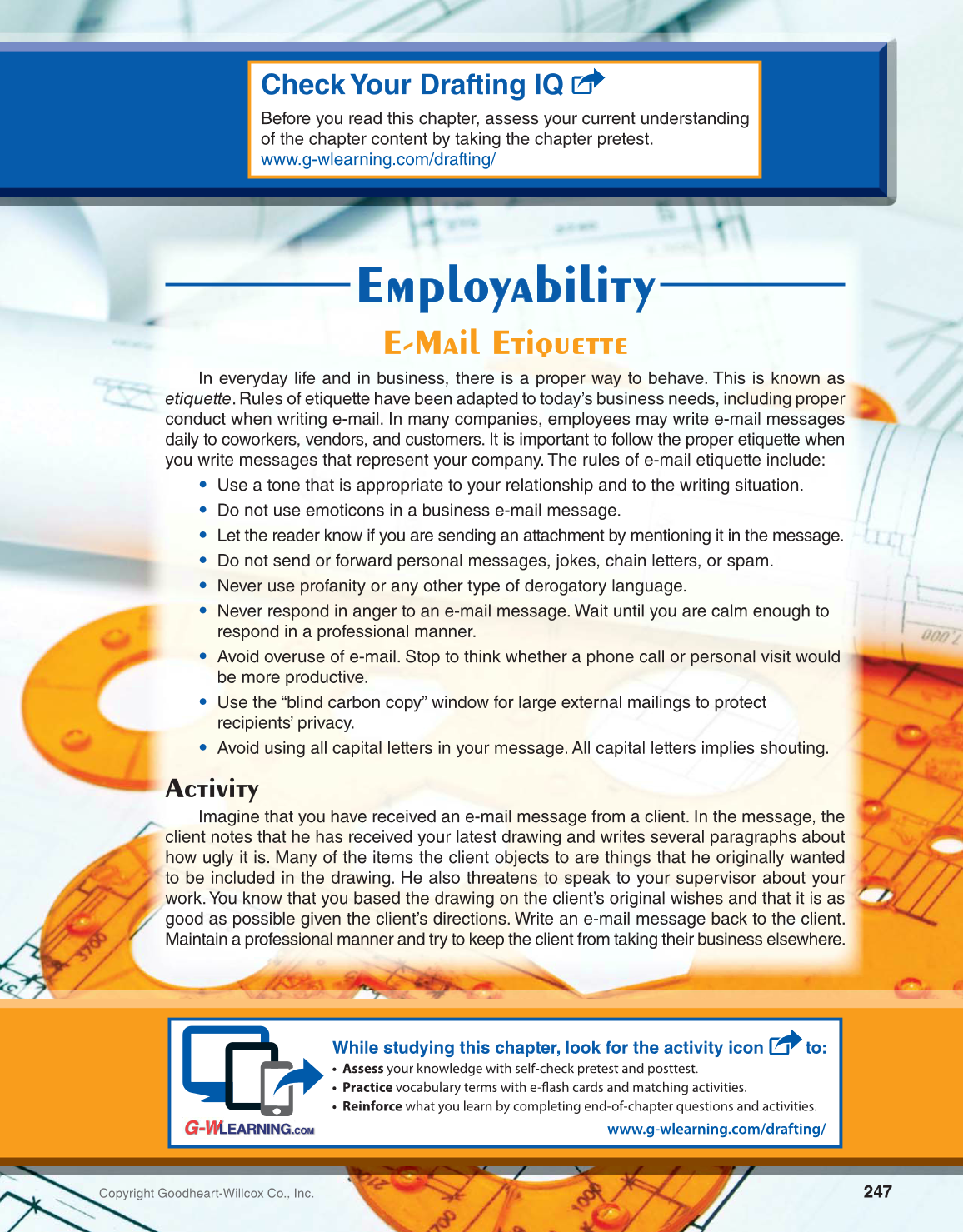www.g-wlearning.com/drafting/
While studying this chapter, look for the activity icon to:
• Assess your knowledge with self-check pretest and posttest.
• Practice vocabulary terms with e-flash cards and matching activities.
• Reinforce what you learn by completing end-of-chapter questions and activities.
247
Employability Employability
E-Mail Etiquette
In everyday life and in business, there is a proper way to behave. This is known as
etiquette. Rules of etiquette have been adapted to today’s business needs, including proper
conduct when writing e-mail. In many companies, employees may write e-mail messages
daily to coworkers, vendors, and customers. It is important to follow the proper etiquette when
you write messages that represent your company. The rules of e-mail etiquette include:
•
Use a tone that is appropriate to your relationship and to the writing situation.
•
Do not use emoticons in a business e-mail message.
•
Let the reader know if you are sending an attachment by mentioning it in the message.
•
Do not send or forward personal messages, jokes, chain letters, or spam.
•
Never use profanity or any other type of derogatory language.
•
Never respond in anger to an e-mail message. Wait until you are calm enough to
respond in a professional manner.
•
Avoid overuse of e-mail. Stop to think whether a phone call or personal visit would
be more productive.
•
Use the “blind carbon copy” window for large external mailings to protect
recipients’ privacy.
•
Avoid using all capital letters in your message. All capital letters implies shouting.
Activity
Imagine that you have received an e-mail message from a client. In the message, the
client notes that he has received your latest drawing and writes several paragraphs about
how ugly it is. Many of the items the client objects to are things that he originally wanted
to be included in the drawing. He also threatens to speak to your supervisor about your
work. You know that you based the drawing on the client’s original wishes and that it is as
good as possible given the client’s directions. Write an e-mail message back to the client.
Maintain a professional manner and try to keep the client from taking their business elsewhere.
Check Your Drafting IQ
Before you read this chapter, assess your current understanding
of the chapter content by taking the chapter pretest.
www.g-wlearning.com/drafting/
Copyright Goodheart-Willcox Co., Inc.
